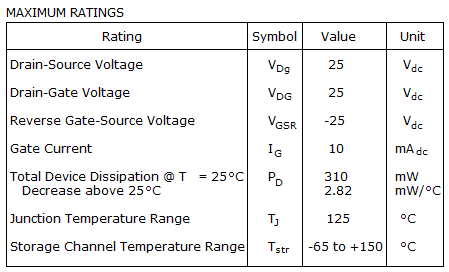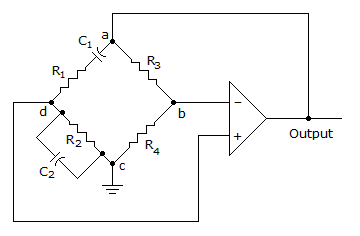Online Electronic Devices Test - Electronic Devices Test 8
Instruction:
- This is a FREE online test. Beware of scammers who ask for money to attend this test.
- Total number of questions: 20.
- Time allotted: 30 minutes.
- Each question carries 1 mark; there are no negative marks.
- DO NOT refresh the page.
- All the best!
Marks : 2/20
Total number of questions
20
Number of answered questions
0
Number of unanswered questions
20
Test Review : View answers and explanation for this test.
1.
The full-wave voltage doubler provides ________ filtering action than (as) the half-wave voltage doubler.
Your Answer: Option
(Not Answered)
Correct Answer: Option
Discuss about this problem : Discuss in Forum
Learn more problems on : Diode Applications
2.
The dc emitter current of a transistor is 8 mA. What is the value of re?
Your Answer: Option
(Not Answered)
Correct Answer: Option
Discuss about this problem : Discuss in Forum
Learn more problems on : BJT Amplifiers
3.
Refer to this portion of a specification sheet. Determine the values of reverse-gate-source voltage and gate current if the FET was forced to accept it.

Your Answer: Option
(Not Answered)
Correct Answer: Option
Discuss about this problem : Discuss in Forum
Learn more problems on : FET Devices
4.
The silicon dioxide (SiO2) layer used in a MOSFET is ________.
Your Answer: Option
(Not Answered)
Correct Answer: Option
Discuss about this problem : Discuss in Forum
Learn more problems on : FET Devices
5.
What is the range of gm for JFETs?
Your Answer: Option
(Not Answered)
Correct Answer: Option
Discuss about this problem : Discuss in Forum
Learn more problems on : FET Amplifiers
6.
What is the normalized gain expressed in dB for the cutoff frequencies?
Your Answer: Option
(Not Answered)
Correct Answer: Option
Discuss about this problem : Discuss in Forum
Learn more problems on : BJT and FET Frequency Response
7.
In which of the following are operational amplifiers (op-amps) used?
Your Answer: Option
(Not Answered)
Correct Answer: Option
Discuss about this problem : Discuss in Forum
Learn more problems on : Operational Amplifiers
8.
Determine the output voltage when V1 = –V2 = –1 V.

Your Answer: Option
(Not Answered)
Correct Answer: Option
Discuss about this problem : Discuss in Forum
Learn more problems on : Op-Amp Applications
9.
The voltage gain of a voltage buffer is ________ .
Your Answer: Option
(Not Answered)
Correct Answer: Option
Discuss about this problem : Discuss in Forum
Learn more problems on : Op-Amp Applications
10.
In an instrumentation amplifier, the output voltage is based on the ________ times a scale factor.
Your Answer: Option
(Not Answered)
Correct Answer: Option
Discuss about this problem : Discuss in Forum
Learn more problems on : Op-Amp Applications
11.
Calculate the effective resistance seen looking into the primary of a 20:1 transformer connected to an 8- load.
load.
 load.
load.Your Answer: Option
(Not Answered)
Correct Answer: Option
Discuss about this problem : Discuss in Forum
Learn more problems on : Power Amplifiers
12.
A heat sink provides ________ thermal resistance between case and air.
Your Answer: Option
(Not Answered)
Correct Answer: Option
Discuss about this problem : Discuss in Forum
Learn more problems on : Power Amplifiers
13.
In the Wien bridge oscillator with R1 = R2 = R and C1 = C2 = C, a ratio of R3 to R4 will provide sufficient loop gain for the circuit to oscillate.

Your Answer: Option
(Not Answered)
Correct Answer: Option
Discuss about this problem : Discuss in Forum
Learn more problems on : Oscillator Circuits
14.
The ________ are the terminals of an SCS.
Your Answer: Option
(Not Answered)
Correct Answer: Option
Discuss about this problem : Discuss in Forum
Learn more problems on : PNPN
15.
The anode gate connection can be used to turn the SCS device ________.
Your Answer: Option
(Not Answered)
Correct Answer: Option
Discuss about this problem : Discuss in Forum
Learn more problems on : PNPN
16.
You have an unknown type of diode in a circuit. You measure the voltage across it and find it to be 0.3 V. The diode might be
Your Answer: Option
(Not Answered)
Correct Answer: Option
Discuss about this problem : Discuss in Forum
Learn more problems on : Semiconductors
17.
What is the dc input resistance at the base of a BJT?
Your Answer: Option
(Not Answered)
Correct Answer: Option
Discuss about this problem : Discuss in Forum
Learn more problems on : Transistor Bias Circuits
18.
An OTA has
Your Answer: Option
(Not Answered)
Correct Answer: Option
Discuss about this problem : Discuss in Forum
Learn more problems on : Special-Purpose Op-Amp Circuits
19.
An active filter uses capacitors and inductors in the feedback network.
Your Answer: Option
(Not Answered)
Correct Answer: Option
Discuss about this problem : Discuss in Forum
Learn more problems on : Active Filters
20.
Amplitude modulation is a ________ process.
Your Answer: Option
(Not Answered)
Correct Answer: Option
Discuss about this problem : Discuss in Forum
Learn more problems on : Communications
*** END OF THE TEST ***
Time Left: 00:29:56
Post your test result / feedback here:
Quick links
Quantitative Aptitude
Verbal (English)
Reasoning
Programming
Interview
Placement Papers
 S to 10
S to 10  DCRC
DCRC )
)